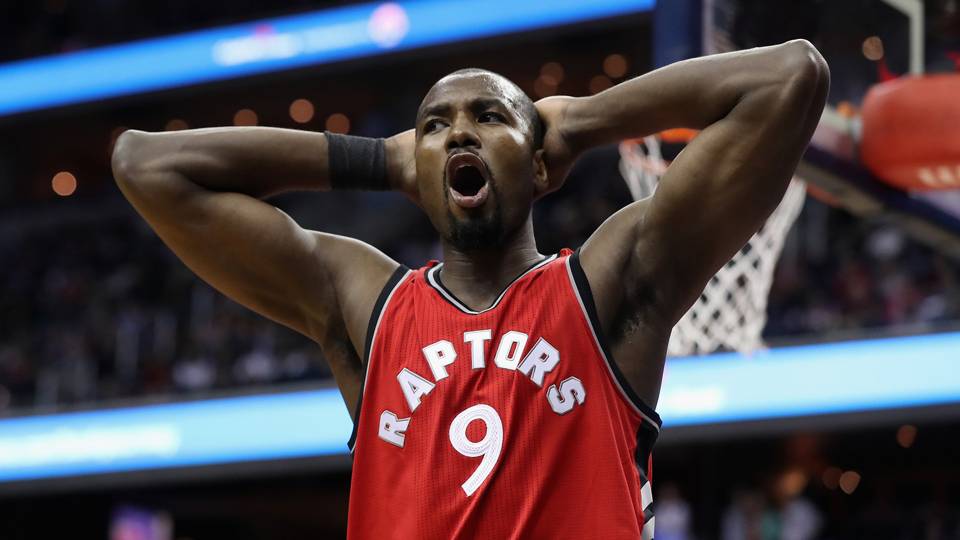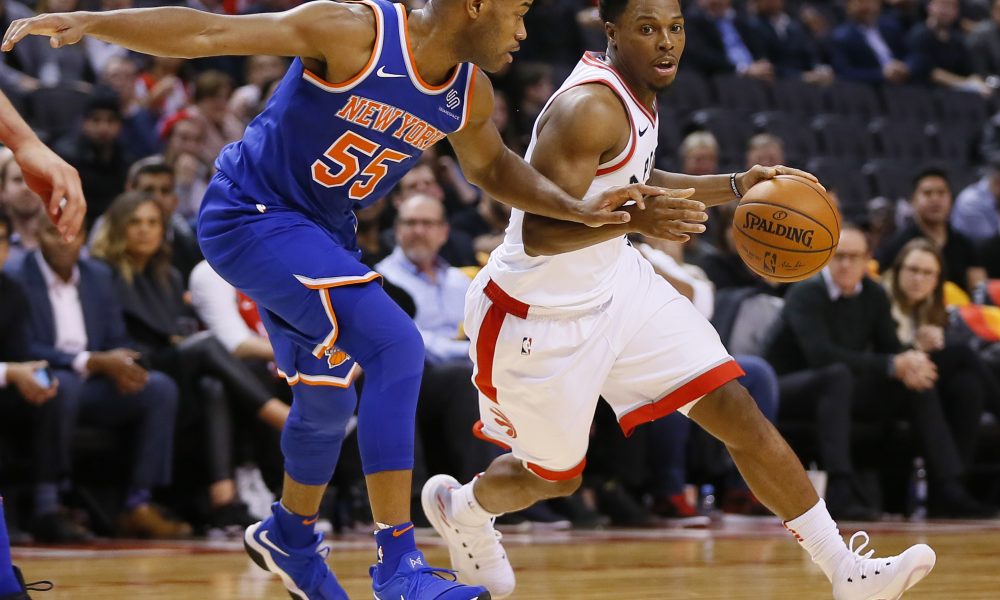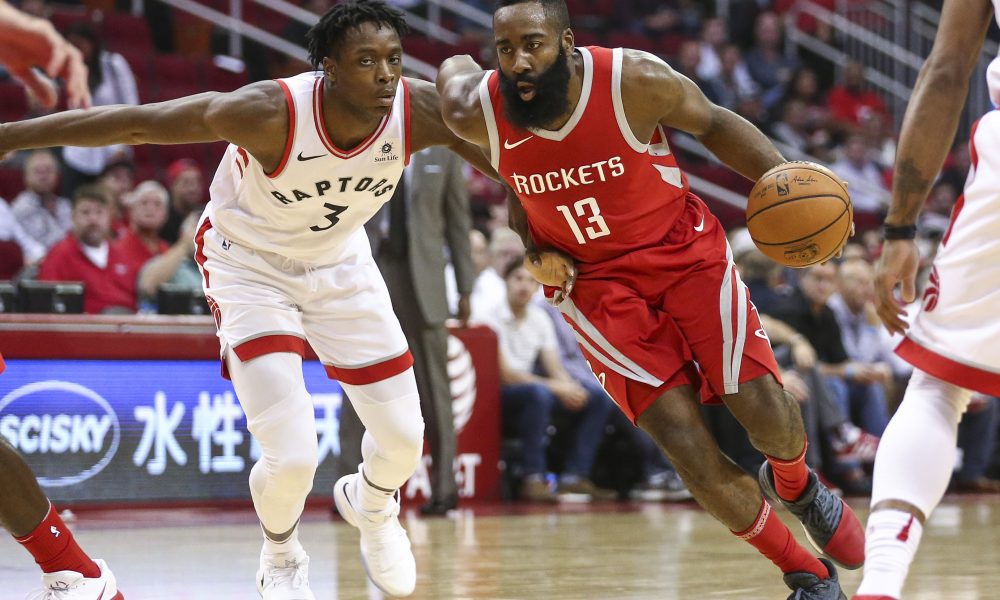When Serge Ibaka was traded to the Toronto Raptors from the Orlando Magic, the idea was that he would bring defensive stability to a team desperately in need of a powerful presence at the four spot (with no offence meant to Patrick Patterson). He hadn’t played all that well in his time with Orlando, but that could easily have been chocked up to the fact that the Magic were not in any way a contending team, and thus the Raptors decided to go after him hard, with Masai Ujiri singing his praises along the way.
And for good reason.
Ibaka was once a terror with the Oklahoma City Thunder, swatting shots so often that he garnered himself the nickname “Iblocka,” and changing opponents’ looks at the rim just by turning his head towards them. He was a plus on offense, too, with a killer midrange game that complimented Kevin Durant and Russell Westbrook so well that they went to The Finals in 2012.
For the most part, that offensive game has travelled with Ibaka since he was first traded from the Thunder. For the Raptors last season, he came in late, and despite his ability to make shots, it never seemed that he was fitting perfectly well.
Admittedly, a full training camp with a new team usually helps quell these sorts of problems.
And Toronto banked on that very idea, re-signing Ibaka to a $65 million contract in the offseason to bring him back for three years. It was a deal that everyone knew was coming—when the rumours of Ibaka potentially coming to the Raptors first surfaced, it was general knowledge that Ujiri wouldn’t have been comfortable with such a trade if the forward wasn’t interested in re-signing with the team.
So now, here we are, nearing the end of November for the 2017–18 season, and the issues about Ibaka’s fit have become a realization that his defensive prowess has simply fallen off. Not to the point of him being unplayable, of course—no, Ibaka is at times a good help defender, and when he has blocked shots this season it’s often come from his movement on the weak side in the paint. If he were unplayable, there would likely be a lot more uproar about trading him away.
Still, the Raptors are 11th in the league in defensive rating, and the starting lineup has been poor defensively as a whole. A big part of that is how badly Ibaka and Jonas Valanciunas have been together on the defensive end, particularly when forced into guarding the pick and roll. Neither of them are very astute, it seems, at communicating to the other during these moments, and often both are too slow-footed to defend well.
It doesn’t get much better from there. Ibaka also moves at tortoise-level speed when closing out on three-point shooters, and there have been a number of times where he’s had looks drilled right in his face for arriving late. His rim protection has also been poor, allowing opponents to score on him at the rim 64.2 per cent (for comparison, that’s worse than all of Toronto’s other bigs) of the time.
This season, Ibaka is averaging career-lows in blocks (1.1) and defensive win shares (0.4), and his PER (14.7) is below league-average. His rebounding has taken a hit as well—what with him averaging his lowest per game (5.6) since his rookie year and his total rebound percentage sitting at a career-low 12 per cent. And while it’s true that Ibaka spends a lot more time away from the basket nowadays, there’s still no way he should be getting out-rebounded by guys like T.J. Warren, Lonzo Ball, Thaddeus Young, and former teammate DeMarre Carroll (it burns!) to name a few.
Fortunately for the Raptors, what Ibaka has managed to give them is offense. His true shooting percentage is the highest it’s ever been (62.3), and out of pick and pops and whenever he’s left open from beyond the arc, Ibaka has been money. He’s shooting 40.7 per cent on catch-and-shoot triples, which is both impressive and worrisome (more on this momentarily). When he drives to the basket, he usually scores, making 89.5 per cent of his attempts from within three feet of the hoop.
What’s worrisome about how well Ibaka’s been playing on offense, and therefore covering up some for his lacklustre defensive play, is whether or not he’ll be able to sustain this type of shooting throughout the season. Making 41 per cent off of catch-and-shoot threes is a tough mark to maintain, especially when a whopping 50.8 per cent of his total shot attempts come from deep. Factor in his non-three-point catch-and-shoot percentage (39.2), and the idea of his continued shooting gets a little more concerning. And then, add on top of that the fact that Ibaka is one of the only Raptors who can step out and make these shots consistently in a system that demands the team make at least some threes, as well as the fact that he’s a bit of a black hole on offense.
Once Ibaka gets the ball in his hands, you can bet your bottom dollar it’s going up.
Despite his decline (which, by the way, most big men do not shake off), Ibaka is still a vital piece of Toronto’s offense. He spreads the floor, can take other big men off the dribble, and contains a wealth of knowledge that can only be useful for the roster’s plethora of young bigs. But he’s going to have to keep up this great offensive pace he’s set for himself early on.
Because he’s simply Serge Iblocka no more, and we’re all just going to have to get used to that.



